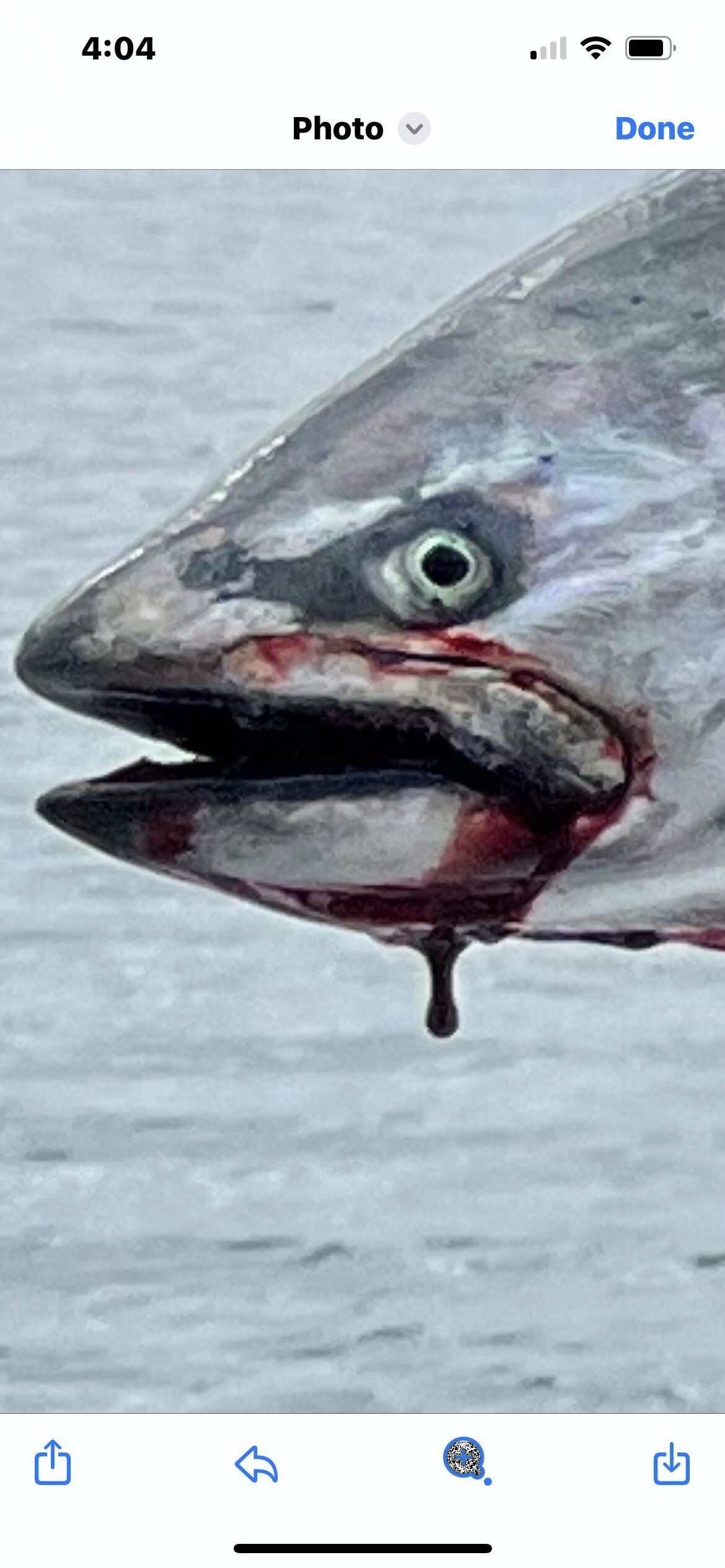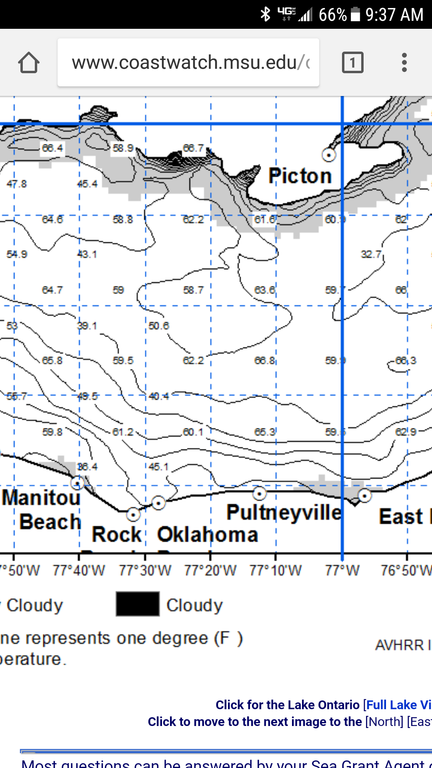-
Posts
7,330 -
Joined
-
Last visited
Everything posted by Gill-T
-
If you are running a clear dipsy then leader length should not matter.
-

Using Dipsey's off your downriggers
Gill-T replied to Fishbowl836's topic in Questions About Trout & Salmon Trolling?
More likely those are kings. June is called the "transition" for good reason. Bait is coming ashore to spawn pulling predators with them. Meanwhile some bait is still in winter deep pattern so you are likely to still see those 150'-225' bait and salmon marks for the rest of the month. Once the bait hits the shore and completes spawning it will move out into the lake in their preferred temp range. July makes for easier fishing because of stratification of lake temps makes targeting easier plus alewives are out of their deep cycle pulling predators with them. Those deep marks are hard to target. I might dedicate one rod to chasing deep so my boat mates don't fall asleep from boredom. -

Otisco finally gives up a good tiger
Gill-T replied to justtracytrolling's topic in Musky, Tiger Musky & Pike (ESOX)
That is a BIG tiger! -
Mine say size 6. They look like a pearl white with a glow green head paint. Set up a braid line counter rod with a weight at bottom of rig. Find a school of bait and send your rig down to depth match they are showing on fishfinder to line counter on reel. Keep movements small-no snap jigging. When you get the hang of it you start trying to bring up multiples at once.
-
Get the white color ones. They look like fleas that make up 25% of their diet
-

Using Dipsey's off your downriggers
Gill-T replied to Fishbowl836's topic in Questions About Trout & Salmon Trolling?
You would need an Aftco Roller release to attach to the terminal swivel of your downrigger. Deploy your dipsy, clip your dipsy wire or braid into the roller release and send down the downrigger. With the roller release you can release more line out or reel more in, as it is a pulley. You can definitely get deeper and even keep track of how deep. For example, you let out 300' of wire with a mag dipsy (now running 105' down), you clipped the dipsy line into downrigger release and sent it down another 50'. Once down, you would let out an additional 50' of dipsy line to compensate for the line taken up by the downrigger drop and voila......you are cruising at 155' of depth. I don't think this will result in less work as you not only have to crank in your downrigger, but also a dipsy. It will allow you to reach depths thought to be unachievable. -

Looking Like A Rough Weekend On Lake O?
Gill-T replied to Todd in NY's topic in Open Lake Discussion
Huh? Looking at NOAA ( I know.....NOAA probably stands for Never Overly Accurate Anytime) it would appear Olcott will be quite fishable. Looking at the water..........there should be Kings in play with the North shore rolling over. If I didn't have my kid's high school graduation this weekend, I would be out! -
Like all Northern and Canadian Shield Lakes, fish the river mouths esp at evening/night and during the day fish the side of the lake where the waves are crashing on the bank.
-
Hit the inshore water off Sunset Bay. The Catt water temp spiked to 82 degrees driving a lot of the Gizzard Shad out into the lake. Off the beach water temp was 72 degrees. After catching a couple of quick sheephead jigging, decided to try to locate the smallmouth by trolling. 14'-16'FOW with two long lines and stickbaits and one downrigger down 5-8' with a 60' setback. What a blast. My brother and I caught 6 different species.... lots of Sheephead, a Rock Bass, two huge Yellow Perch, a Walleye, tons of Smallmouth and nice 15" Silver Bass. Nice seeing a rigger go off 30 times in a day. A couple of times the silvers balled up bait at the surface and we stopped the boat to cast for these hard fighting fish. Father's Day this morning started with a morning fish fry.
-
Opportunity Gizzard Shad have come into the Catt. Walleyes have followed them in. There is a night bite right now.......don't know how long it will last.
-

Will we see many three year old kings this year?
Gill-T replied to Gill-T's topic in Open Lake Discussion
There was very few entries. Water levels probably played some role. -
Will we see many three year old kings this year? I have to admit I am a little worried that the 2014 year class of kings may be MIA. I will be interested to see the results of the tightlines event in Canada as conditions look favorable for the weekend. The LOC board this spring was pathetic. With the 2014 Alewife hatch almost nonexistent and the lack of emerald shiners, it would seem to indicate that the 2014 class of salmon would have to live on bugs until big enough to chase yr 1 alewives. Muddling the picture is the 2 year olds enjoyed two strong year classes of alewife hatches and are big. Are we looking at big two year olds or small three year olds? Anyone taking fish over 22 lbs this year?
-
You woul never catch them with a cast net unless they are near piers or harbor docks. Adult alewives can scoot!
-
Find them on graph and use a sabikki rig. Have a ice bath with curing salts to throw them in until you get home
-
Or you could just use the wire-line knot .......its free.
-

Deep water out of Oswego
Gill-T replied to littlemack's topic in New York Fishing Reports - Lake Ontario (South Shore)
There is a nice warm water pocket showing offshore of Oswego right now. -

salmon education
Gill-T replied to Chinook Chaser's topic in Questions About Trout & Salmon Trolling?
That surface temp map is probably the least accurate one available. It uses satellite image to measure heat signature that is why it appears black whenever cloud cover exists. When you get a cloudless day and an accurate picture look for an area where the temp gradient lines are close together denoting a temp break. Fishing Bass, logs and rocks represent structure. When fishing pelagics, water temp and currents are our structure. -

Olcott
Gill-T replied to Decoy Hound's topic in New York Fishing Reports - Lake Ontario (South Shore)
-
Don't forget your.....lucky nickel, lucky rabbit's foot, lucky horseshoe, lucky hat, lucky fish pole, lucky lure etc etc




